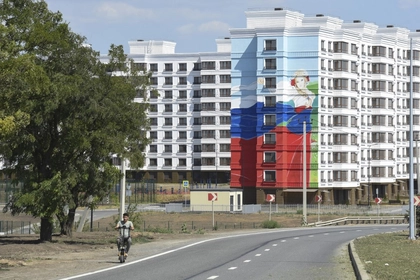Russia’s International Military-Technical Forum “Army-2024” was held from Aug. 12 to 14 at the exhibition center of the Patriot Park near Moscow. The exhibition covered about 160,000 square meters (1.7 million square feet), where around 1,000 enterprises from defense industries of Russia, Belarus, Iran, India and China displayed more than 28,000 military and dual-use products.
Many of the exhibitors claim their latest products had captured feedback from users in the air, on the sea, and on the Ukrainian land-based battlefield. In that case, it is worth looking at some of the most interesting developments and ask will the lessons learnt in Ukraine have real applications in 21st century warfare and when, if ever, will they appear in Ukraine.
Unmanned vehicles (drones)
Unsurprisingly unmanned aerial, surface and ground vehicles (UAV, USV, UGV) featured on the stands of a number of exhibitors. These included:
Murena 300S USV
The Murena 300 S unmanned surface vessel manufactured by Russia’s Center for Unmanned Systems. Photo: Telegram

Ukraine’s Usyk Beats Fury in Heavyweight Championship Rematch
- Remarkably similar to Ukraine’s MAGURA V5, a number of which were recovered intact by Russian forces. It is 5.5 meters (18 feet) long, 1.5 meters (5 feet) wide, with a range of 500 kilometers (310 miles). It can carry a 500-kilogram (1,100-pound) payload at speed of 45 kph (28 mph).
- It is said to be resistant to electronic warfare (EW), inertial navigation system and uses high speed internet to pass information from a sensor suite that includes a thermal camera with 40x zoom, an infrared system and a LIDAR (light detecting and ranging system).
Iranian B1 Bavar UAV
- Described as reconnaissance and strike loitering munition, it is a quadcopter drone with a maximum take-off weight of 7 kilograms (15.4 pounds. It carries purpose built 2 kilogram (4.5 pound) high explosive warheads consisting of a 40-piece expanding metal rod or 200 pre-formed fragments each weighing 1.5 grams (0.05 ounces).
- It has a 10x zoom optoelectronic camera and is controlled by one operator. The drone endurance fitted with a warhead, is 25 minutes, while used for reconnaissance, without the warhead, it is 35 minutes and a range of 10 to 12 kilometers (6.5 – 7.5 miles).
Quadriga autonomous 120 mm mortar UGV
The Quadriga UGV is fitted with the Russian 2B11 120mm mortar on display at Army 24. Photo: Defense Market news
- The Quadriga UGV is fitted with the 2B11 120mm mortar with a range of 7 kilometers (4.5 miles) and is said to offer enhanced battlefield efficiency by delivering powerful mortar fire while ensuring high mobility and stealth. It is said to have a range of 800 kilometers (500 miles) at a speed of 30 kph (20 mph) and claims to be made ready to fire within 2 minutes of stopping.
- While marketed as a UGV, it does not seem to include an automatic loading system for the mortar and the presence of a seat on one side shows the mortar has to be fired by an operator. As such it is merely a “load bearer” vehicle used to carry the weapon and ammunition.
Kronshtadt Grom strike UAV
The Kronshtadt Grom strike UAV. Photo: Russian MoD
- It is intended as a “wingman” in cooperation with manned aircraft to suppress enemy air defenses using anti-radar missiles such as the Kh-31P and Kh-58UShK as well as electronic reconnaissance to identify air defense radars.
- It can carry up to a 2,000-kilogram (4,500-pound) payload on four underwing hardpoints and in fuselage weapons bay. It has a maximum speed of 1,000 kph (625 mph) at maximum flight altitude of 12,000 meters (39,000 feet), and an operational radius of 700 kilometers (435 miles). It can be used to launch laser-guided, GLONASS-guided or TV-guided missiles, free-fall and aerial glide bombs up to 500 kilograms as well air-to-surface and anti-radar missiles.
Armored Vehicles
Historically Russia has striven to design its tanks, armored personnel carriers (APC), and infantry fighting vehicles (IFV) to have the lowest possible silhouettes with streamlined contours to its hulls and turrets. The displays this year show armored behemoths covered in anti-drone armored cages, boxes and nets fully illustrating the impact that first-person view (FPV) kamikaze drones and loitering munitions have had on the Ukrainian battlefield.
Some of solutions proposed by Russian manufacturers and the military are shown below.
T-90M main battle tank (MBT)
The T-90M MBT covered in Nakidka radar and thermal-absorbent material, anti-drone netting and mine clearance roller system as displayed at “Army 24.” Photo: Army 24/Russian MoD
- The T-90M Proryv, like others among the newest tanks such as the T-72B3M and T-80BVM tanks, as well as new APCs and IFVs such as the BTR-82A, BMP-3 and BMP-1AM Basurmanin, come completely covered in Nakidka radar and thermal-absorbent material, as well as with additional sections of explosively active protection on the sides, rear and frontal parts.
- Additional protection is provided to the upper areas with cage armor, anti-drone nets, more active protection elements. Further anti-drone protection is given to the engine and transmission compartments by multilayer rubber sheeting. Portable electronic countermeasure systems (ECM), such as the Volnorez (Breakwater) counter-drone jamming system, are installed on almost all armored vehicles on display.
- A spokesperson for the Research Institute of Steel (part of the Kalashnikov enterprise) said, “We did not anticipate the widespread use of such [FPV] drones when the conflict began two years ago. Our company is currently working on solutions to address this new type of threat.” He then added “Today, Nakidka is becoming a mandatory element of the Russian armored vehicles sent to the combat zone.”
BTR-22 8x8 APC
The new BTR-22 8x8 armored personnel carrier vehicle displayed at Army 2024. Photo: Telegram
- The BTR-22 is an amphibious 8x8 wheeled APC with a combat weight of 20 tons and a crew of 11. It is powered by a 360-horsepower diesel engine with a 5-speed manual gearbox. It has a 475-millimeter (18.7 inch) ground clearance with a maximum road speed of 85 kph (45 mph).
- The vehicle is designed to be mine and resistant, able to withstand a detonation of up to 6 kilograms (13.2 pounds) of TNT under its wheels or bottom, offering crucial defense against improvised explosive devices. The vehicle features increased ballistic protection, rated to withstand direct strike from 12.7 x 108 mm caliber ammunition. The BTR-22 is armed with a 30 mm 2A72 automatic cannon and a 7.62 mm PKTM coaxial machine gun.
- It is equipped with the LGSh-689 electronic warfare system to counter the FPV drone threat. It is also fitted with all-round wire cage and slat bar armor for additional enhanced protection. The BTR-22 is expected to become the base vehicle of a family of combat, technical, and logistical support vehicles.
The exhibition included new enhanced versions of the short-range Pantsir-SMD-E air defense system, which you can read about here.
The Triada-TKO LLC company, a subsidiary of Kalashnikov displayed high-tech integrated personal protective uniforms and body armor that they say were designed to increase the levels of protection available to troops, which you can read about in more detail here.
The Triada-TKO LLC company’s body armor designed to redistribute the load to their waist and hips. Photo: Kalashnikov
However, with reports that many Russian personnel deployed to the front line in Ukraine have had to buy their own uniforms and protective equipment and the reportedly poor condition of the uniforms of captured Russian troops, it seems unlikely that this equipment, like most of the “goodies” on display in Moscow last week, will find their way to President Putin’s “special military operation” any time soon.
You can also highlight the text and press Ctrl + Enter












